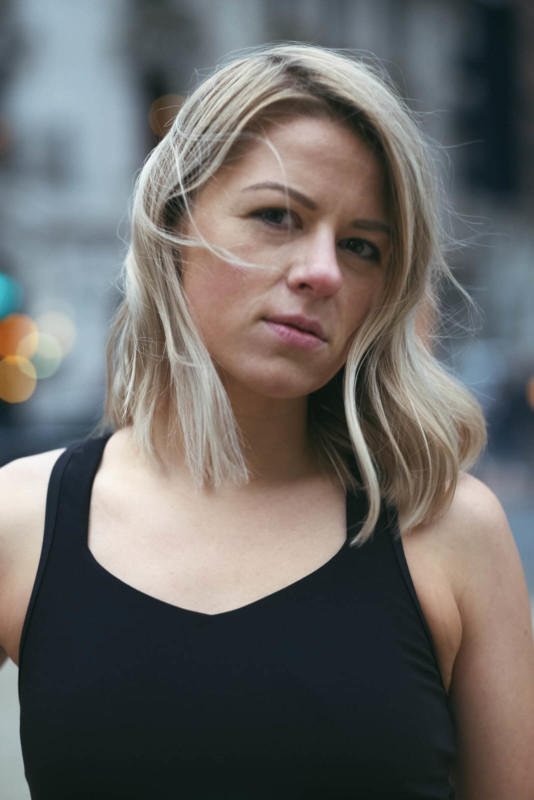Dear Camera Companies: Please Make a Fast Lens Between 50mm and 85mm
![]()
For some time now, my favourite portrait lens has been the Sigma 85mm f/1.4 art. This lens, as many of you may know, is simply incredible when it comes to performance. Even the price of this lens isn’t unreasonable when you compare it to some alternatives currently available.
Another favorite lens of mine is the Sigma 50mm f/1.4 Art. This lens also offers fantastic performance and although I still use it with my Canon cameras, with my Sony cameras, I now prefer the Zeiss 55mm f/1.8. Both of these focal lengths are really popular for many photographers including me. Although there are companies that offer 75mm lenses like Leica, the problem is that currently, none of the major manufacturers offer a wide aperture lens between 50mm and 85mm.
Medium Format
You may have heard something about the “medium format look,” and photographers who choose the larger sensor options tend to discuss this as a valuable benefit. Aspect ratios aside, I’ve found this to be more a property of the lens as opposed to the actual sensor.
Essentially, the “medium format look” is having a wider angle of view, with a shallow depth of field at any given focal length. This also means you actually have less compression in the image if you’re trying to match the frame with any given focal length. The reason is because you’re required to shoot closer to your subject than you would with the same focal length on a smaller sensor.
Remember, compression has nothing to do with focal length and everything to do with how close or far you are from your subject.
The “medium format look” is also predominantly down to the fact that there are certain unique lenses available, like the Hasselblad 100mm f/2.2. I say this is unique because an equivalent of this lens does not currently exist for full frame cameras. This lens would be somewhat comparable to a hypothetical 65mm f/1.4 on full frame. This focal length sits quite well between 50 and 85. The Hasselblad 100mm is a popular portrait lens for good reason and the angle of view plays a huge part in that.

Another more recent lens from Hasselblad is the 80mm f/1.9 for the X1D. This again offers a similar look to the 100mm on the larger sensor. I found the XCD 80mm offered exceptional image quality and a relatively unique look. If you want the “medium format look” with your full frame camera, a wide aperture lens that sits between 50mm and 85mm will go a long way to produce that.
Leica
Leica is currently the only full frame camera manufacturer that offer several 75mm lenses. Their latest addition to the line is the Noctilux-M 75mm f/1.25. The results this lens produces is definitely special, however, with a price tag of almost $13,000, it’s not the most practical option for most of us. Instead, I’ve been shooting with the Leica 75mm f/2 APO lens on the M10-P, and I’m a big fan of the results. The slightly wider angle of view fits relatively well with my style of shooting.
I would have preferred a lens at around 65mm or even 70mm and I believe that would have been perfect. Even still, I enjoyed shooting more with the 75mm lens on the Leica than I did with an 85mm on Sony or Canon. Sure, this can be put aside as nothing more than personal preference. However, I strongly feel an option between 50mm and 85mm would be extremely popular.
Finally, I’m aware that I missed focus on the image below, I’m still working on my experience with rangefinder cameras. Let’s not let that distract us from the actual point.

Current Lenses
Some of you may be inclined to believe that the two focal lengths 50mm and 85mm are sufficient. Shoot with an 85mm for portraits and if you need something wider then use a 50mm right? Some of you may even ask if there’s any need to have a lens between the two, and to that I say, absolutely.
Consider the lenses available around the wider range. Currently with Sony mirrorless cameras, which in all fairness hasn’t been around as long as Canon and Nikon, there are plenty of wide-angle lenses to choose from.
- Zeiss Batis 18mm f/2
- Sigma 20mm f/1.4 Art
- Sigma 24mm f/1.4 Art
- Sony 24mm f/1.4 GM
- Zeiss Batis 25mm f/2
- Sony 28mm f/2
- Sony 35mm f/1.4
- Sigma 40mm f/1.4 Art
- Zeiss Batis 40mm f/2
The number of lenses available in-between all the focal lengths is almost ridiculous. Once again, this is just for Sony, we haven’t even covered what’s available for Canon and Nikon.
Don’t get me wrong, I absolutely love the fact that there are so many focal lengths to choose from when it comes to wider angle lenses. Why would it be a bad thing if we had more options between 50mm and 85mm? Even if we look at the longer end and consider how many lenses there are in-between all the focal lengths; it starts to make that gap between 50 and 85 seem a little odd.
Sigma
Over the past few years, Sigma has really made a name for themselves for producing extremely high-quality lenses. Its Art series lenses are almost always praised as being some of the best on the market. The great thing about what Sigma does is that they’re not afraid to try new things and offer somewhat unique lenses. Lenses like the 18-35mm f/1.8 Art and the 24-35mm f/2 Art which were at one point, the widest aperture zooms available.
Sigma also has a 70mm lens available too which could have filled this gap. Unfortunately, due to its relatively smaller aperture and that it is a macro lens; it doesn’t quite fill the gap. I personally believe Sigma could be the perfect company to offer something like a 70mm f/1.4 Art or even a 65mm f/1.4 art lens. A lens like this would more than likely be an incredible performer, both in terms of bokeh and sharpness. Sigma isn’t known for producing inferior lenses anymore and a lens such as this would also fit right in with their brand.
Canon
The chances of Canon making a 70mm f/1.4 lens available for their EF mount are slim to none in my view. In the coming years and decades, the EF mount will likely see fewer and fewer updates until eventually it could even be killed off depending on the success of the RF mount.
Having said that, their new RF mount looks very promising. It seems as though Canon is really experimenting with this mount and trying new things. With wide aperture zoom lenses like the 28-70mm f/2, Canon is really pushing the boundaries. I don’t think it would be crazy for them to start offering new and more interesting lenses.
Could Canon start to offer more lenses in-between the focal lengths while people migrate over from the EF mount?
Final Thoughts
The 35mm difference in focal length between 50mm and 85mm is actually pretty significant. In all fairness, that is a pretty big gap especially when you consider the gaps between other focal lengths. This is an area that really needs another focal length just to round off the whole line-up.
In my view, a 70mm or even a 65mm f/1.4 lens would be a Goldilocks type lens between 50mm and 85mm. Not too long and not too wide and also somewhat of a balance between the two when it comes to potential compression.
I also love the look and feel you get from the options available from medium format. This look is not the easiest to replicate and I think something like a 65mm f/1.4 would be the perfect alternative for full frame cameras.
About the author: Usman Dawood is the lead photographer of Sonder Creative, an architectural and interior photography company. The opinions expressed in this article are solely those of the author. You can find more of his work on his website, Instagram, and YouTube.